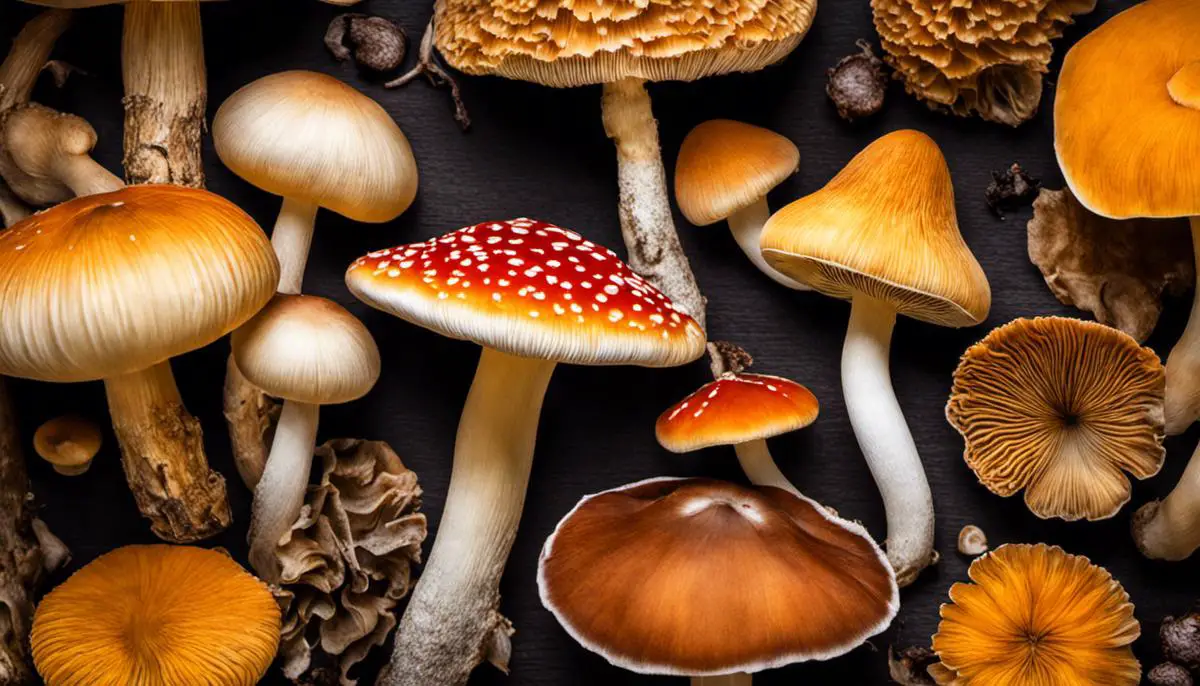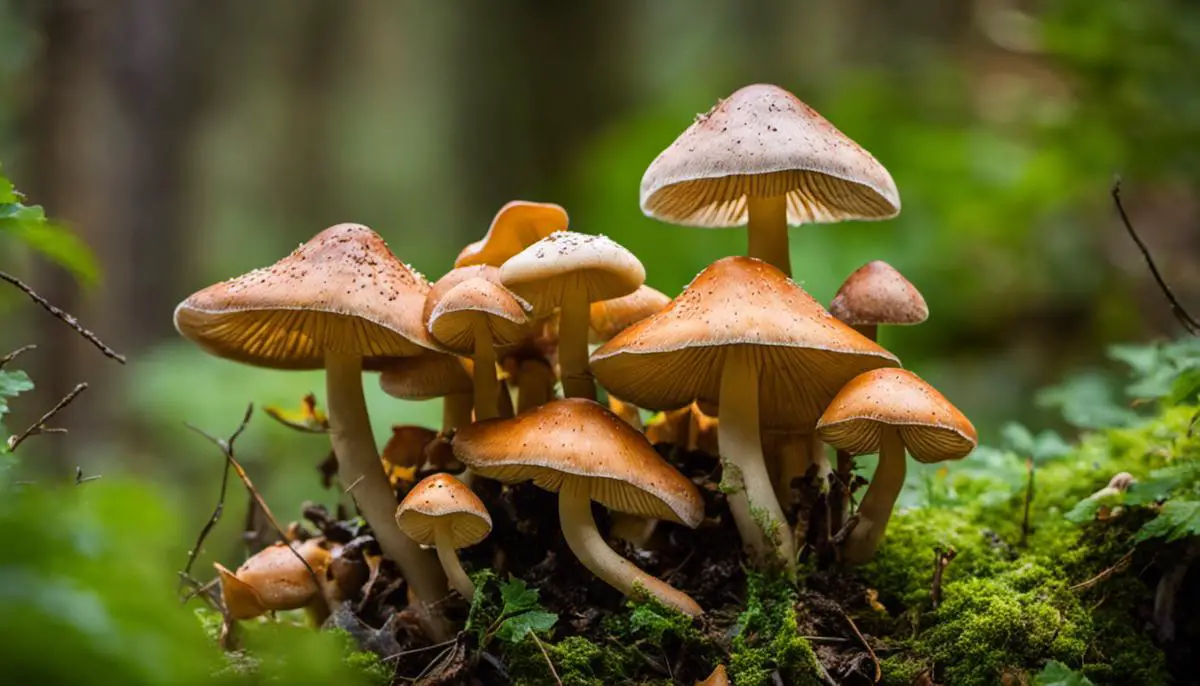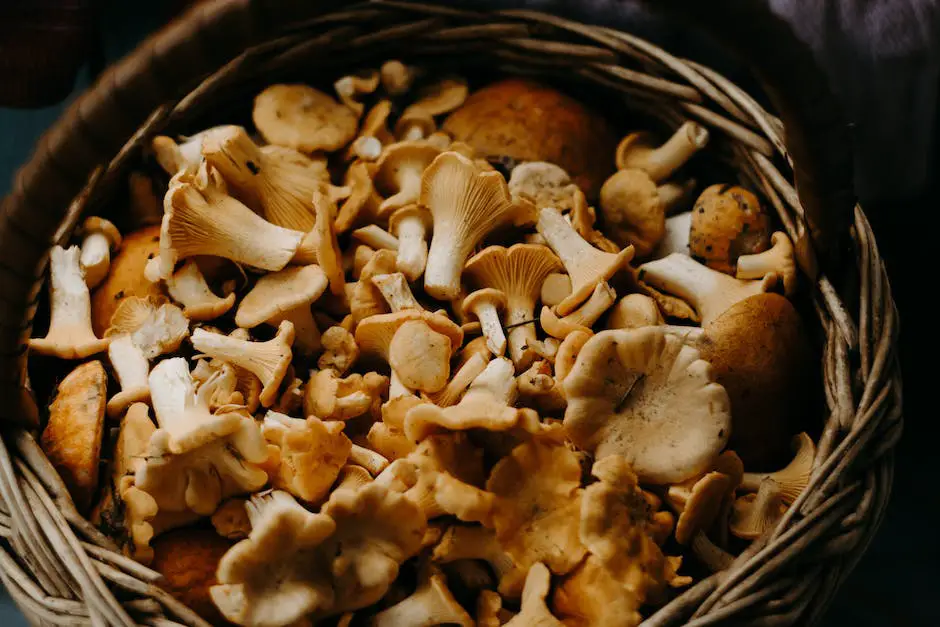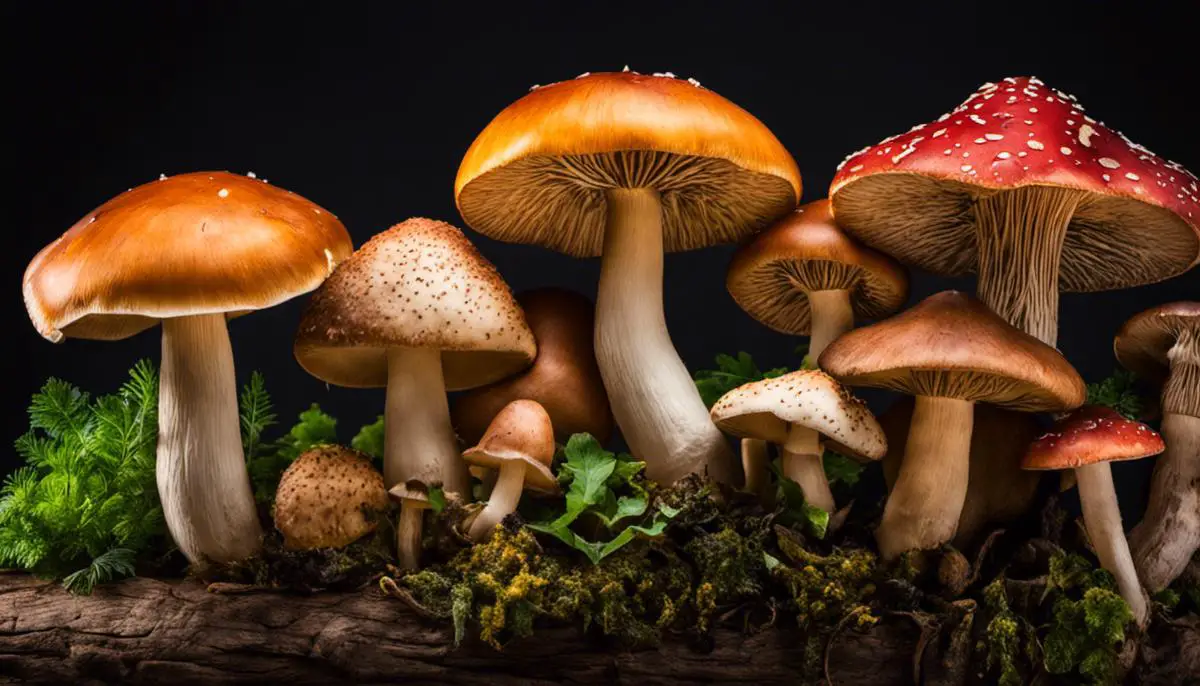Embarking on a journey into the fascinating world of mushrooms, one uncovers an incredible range of species, each one unique in its character and purpose. Perceived as simple organisms, mushrooms surprisingly boast a complexity that contributes to various aspects of life, human existence and the environment. From culinary delights to medicinal miracles, these organisms hold immense potential. This exploration delves into the different types of mushrooms, their cultivation and harvest, medicinal benefits, environmental impact, and sheds light on the safety measures required while foraging for them. An in-depth knowledge of these lifeforms will serve to foster appreciation for their roles, encourage cultivation and promote safe foraging habits.
Different Types of Mushrooms
Mushrooms: A Brief Overview
Mushrooms, or fungi, belong to a kingdom of spore-producing organisms different from plants, animals, and bacteria. There are an estimated 2.2-3.8 million species of fungi, with around 10% classified as mushrooms. They inhabit a wide range of ecosystems, from lush forests to deserts, facilitating organic matter decomposition and nutrient recycling.
Identification Features of Mushrooms
Identifying mushrooms can be intriguing yet challenging due to their diverse shapes, sizes, and colors. Button mushrooms, one of the most common varieties, display a white to cream-colored outer surface. The gills beneath their caps are usually pale, becoming pinkish-brown as they mature.
In contrast, chanterelles are distinguished by their bright yellow or orange shade. They have wavy, funnel-shaped caps with gills resembling veins running down their stem. Morels, another well-known type, are recognized by their honeycomb-like caps. They are usually brown or cream with a spongy texture.
Toadstools, generally regarded as poisonous mushrooms, vary widely in appearance. Some species sport vibrant colors, while others closely resemble harmless mushrooms. Consequently, it’s dangerous to identify mushrooms based on their visuals alone, particularly when foraging for edible ones.
Habitats and Distribution
Mushrooms thrive in a range of environments, each species favoring specific conditions. Button mushrooms are predominantly cultivated and dominate commercial mushroom production worldwide. Wild button mushrooms favor grassy areas, particularly after rain.
Chanterelles, on the other hand, prefer coniferous and deciduous forests. They create a symbiotic relationship with tree roots, contributing to their growth. Fruiting in the summer and fall, chanterelles are found in North America, Europe, and Asia.
Morels favor woodland, often appearing after forest fires. Distributed globally, they sprout during spring in North America, particularly in the Midwest.
As for toadstools, they’re also globally distributed, appearing in various habitats, from forests to lawns. They’re particularly abundant during damp, cool conditions.
Edible Versus Poisonous
Edible mushrooms, such as button mushrooms, chanterelles, and morels, are highly sought after for their culinary and nutritional values. However, some mushrooms can be deadly, like certain toadstools.
Amanita phalloides, known as the death cap, is a type of toadstool notorious for being the deadliest of all mushrooms. It resembles the edible button or paddy straw mushroom, increasing the risk of accidental ingestion.
Therefore, a rule of thumb when foraging for wild mushrooms is never to eat anything unless it’s correctly and undoubtedly identified.
Medicinal and Mind-Altering Mushrooms
Beyond the table, some mushrooms have significant medicinal benefits. For instance, the Turkey tail mushroom has properties enabling it to boost the immune system and decrease the size of cancerous tumors.
On the other hand, Psilocybe cubensis, a psychoactive species, is being explored for its potential in treating psychiatric disorders. It contains psilocybin, a compound known to induce hallucinogenic effects.
In Conclusion
Exploring the universe of mushrooms reveals an extensive and varied array of species, each with distinct characteristics, natural habitats, and possible uses. Yet, it’s crucial to approach unfamiliar species with caution due to the potential risk of toxicity.

Cultivation and Harvest of Mushrooms
Delving into mushroom cultivation introduces you to several phases, including substrate preparation, spore germination, mycelium development, and fruiting conditions. The process begins with substrate preparation, a stage that calls for organic material, like straw, sawdust, paper by-products or a combination thereof, to promote mushroom growth. Standard procedure involves sterilizing or pasteurizing the substrate to eliminate any pre-existing microorganisms.
Next, comes spore germination. Spores are comparable to the seeds in plants, and mushroom growers usually purchase them in the form of a syringe or a spore print. These spores are introduced to the prepared substrate, where they begin to germinate and form thread-like structures, collectively known as mycelium. This is the vegetative part of the fungus, and under optimal conditions, it grows and colonizes the entire substrate.
Subsequent to mycelium fully colonizing the substrate, the container is exposed to conditions that encourage fruiting. These conditions often involve changes in temperature, light, and carbon dioxide levels. Over a period from a few days to a few weeks, depending on the species, mushrooms begin to appear and develop into fully-grown mushrooms ready for harvest.
The harvesting phase generally involves gently twisting or cutting the mature mushrooms from the substrate. Mushrooms are best harvested before the caps fully unroll, and the under part, known as the gills, becomes visible.
Home mushroom cultivation has become increasingly popular due to its simplicity and low startup costs. This can involve growing mushrooms in containers, bags, or outdoor beds. For beginners, buying a mushroom cultivation kit is often the easiest way to start. These kits typically include sterilized, inoculated substrate, and instructions on how to trigger fruiting and harvest the mushrooms.
In contrast, commercial mushroom farms use more sophisticated techniques. Mushroom substrate preparation often involves large, outdoor compost heaps. Specific machinery is used to maintain the compost at optimal moisture and temperature conditions, and to turn it regularly. Commercial farms often use climate-controlled rooms for the different stages of the mushroom life cycle.
Whereas in-home cultivation, inoculation might be done manually, commercial operations often mechanize this process for efficiency. They may also use specialized machinery for harvesting. After picking, the mushrooms are immediately cooled to extend their shelf life. From the cultivation to the distribution, commercial mushroom farming leverages technology to optimize the process and maximize yields.
Appreciating the intricate process of mushroom cultivation can enrich your understanding of these fabulous fungi. A successful mushroom harvest hangs on the balance of correctly executing each phase and maintaining the conditions suited for mushroom growth. This involves being mindful of factors such as substrate composition, temperature, light levels, humidity, and sterile working conditions. Patience, practice, and attention to these variables allow both home growers and commercial farmers to successfully cultivate mushrooms.
It’s essential to bear in mind that the requirements of your mushroom crop will depend on its species. Different types of mushrooms each have unique environmental needs and care instructions, so understanding this is vital. Consistently checking on your mushrooms and providing them with the care they need, are the backbones of a bountiful mushroom harvest, for personal enjoyment or commercial gains.

Nutritional and Medicinal Benefits of Mushrooms
Digging into the Nutrient Richness of Mushrooms
Mushrooms can be a nutritious goldmine, thanks to their high nutrient density. They’re an abundant source of vitamins, minerals, proteins, and dietary fibers. While different types of mushrooms have varying nutrient profiles, most are replete with essentials like Vitamin B (including B1, B2, B3, B5, B6, and B12), Vitamin D, and minerals such as selenium, copper, and potassium. Plus, they’re low in calories and sodium, with zero cholesterol or fat, making them an excellent choice for a nutritious diet.
Another nutritional highlight of mushrooms is their significant dietary fiber content, which promotes good digestion and a healthy gut. The main type of fiber in mushrooms is Beta-glucans, noted for lowering cholesterol levels. Certain mushroom varieties, like Shiitake, Reishi, and Maitake, are especially rich in these beneficial Beta-glucans.
Protein Content and Bioactive Compounds in Mushrooms
Mushrooms are a good source of proteins, providing essential amino acids that our body cannot synthesize. Edible mushrooms like Agaricus, Pleurotus, and Lentinus have superior protein content, akin to animal proteins. They also contain bioactive compounds including polysaccharides, terpenoids, phenolics, sterols, and enzymes that possess antioxidant, anti-inflammatory, antimicrobial, antiviral, and anticancer activities.
Medicinal Benefits and Immunity-Boosting Capability
Historically, certain species of mushrooms have been used in traditional medicine, primarily in Asian countries, for their perceived medicinal properties. Modern research has found evidence to support some of these claims. For example, Reishi mushrooms have been found to have immune-enhancing properties, while Shiitake mushrooms may support cardiovascular health.
Mushrooms are known to enhance the immune system due to the presence of Beta-glucans and other complex carbohydrates, having a modulating effect on the immune response. They stimulate the body’s production of natural killer cells, macrophages, and other immune cells that help our bodies fight pathogens and diseases.
Disease Prevention and Therapeutic Uses
Mushrooms may play a role in cancer prevention by inhibiting the growth of cancer cells, as suggested by some research. Notably, Shiitake, Maitake, and Turkey tail mushrooms have demonstrated anti-cancer properties in both laboratory and animal studies.
They may also offer protective benefits against neurodegenerative diseases like Alzheimer’s and Parkinson’s, owing to their high antioxidant content. Diseases linked to inflammation and oxidative stress may also be mitigated by regular consumption of mushrooms due to their anti-inflammatory and antioxidant properties.
In a nutshell, the inclusion of mushrooms in your daily meals can add immense richness of nutrients to your diet, potentially aiding in the prevention of various diseases. However, it’s critical to understand that these are not substitute for medical treatments, rather they are supplemental to maintaining a healthy lifestyle. As with any health-related concerns, it is always recommended to seek advice from a healthcare professional.

Environmental Impact and Mycoremediation
A Deeper Look Into the World of Mushrooms
Mushrooms, a diverse cohort of fungi, are primarily known for their uniquely nutrient-dense fruiting bodies that naturally spring up from the earth, or other materials. These humble, yet powerful organisms play pivotal roles within our environment, especially in their ability to recycle organic matter, degrade pollutants, and restore habitats. Being nature’s silent yet persistent bioremediators, mushrooms have marked their significance in the ecosystem by aiding in its regeneration, especially in disturbed and polluted areas, for millions of years.
Recycling Organic Matter
One of the critical roles mushrooms play in the environment involves their recycling of organic matter. They break down and consume dead organic material, such as fallen leaves, dead tree trunks, and animal remains. This process involves specific mushroom enzymes designed to decompose resilient materials like lignin and cellulose found in wood. By breaking down these organic materials into simpler substances, they return essential constituents like nitrogen, carbon, and various minerals and nutrients back to the soil. This nutrient recycling promotes plant growth and sustains the overall health of ecosystems.
Investigating Implications for Pollution Breakdown
Mushrooms are also renowned for their ability to break down various contaminants. They contain groups of enzymes, such as laccase, manganese peroxidase, and lignin peroxidase, which can degrade a broad range of persistent pollutants, including heavy metals, dyes, and polycyclic aromatic hydrocarbons, among others. This trait makes mushrooms beneficial for improving soil quality and reducing pollution.
Rejuvenating Habitats
Beyond decomposition and pollutant breakdown, mushrooms play a crucial role in rejuvenating habitats. Certain types of mushrooms, known as mycorrhizal fungi, form mutualistic relationships with plant roots. In this mutually beneficial partnership, the mushrooms help their host plants absorb vital nutrients and water from the soil while the plant in return provides the funghi with sugars. This interaction is invaluable in many ecosystems, contributing to plant survival, growth, and diversity.
The Innovative Field of Mycoremediation
From an ecological standpoint, these unique features of mushrooms have led to the development of an innovative field known as mycoremediation. This is the use of fungi to decontaminate polluted environments effectively. It involves stimulating the natural decomposing abilities of fungi to detoxify hazardous materials in the environment. Mycoremediation is seen as a sustainable, inexpensive, and efficient method for rehabilitating polluted ecosystems. Thus, its potential application ranges from cleaning up oil spills, to breaking down pesticides, to managing agricultural run-off.
Mycoremediation Strategies
Mycoremediation strategies typically involve the introduction of select fungal species into a polluted environment to augment the natural degradation process. Fungi are chosen based on their known abilities to break down specific pollutants. These methods are being increasingly tested and applied to manage various environmental challenges, pushing traditional boundaries in environmental biotechnology.
Mushrooms boast a wide array of extraordinary characteristics, serving as key contributors to sustainable ecosystem management and effective pollution control. Fully exploiting their inherent abilities to recycle organic waste, decompose toxins, and revitalize ecosystems, researchers are looking to the promising field of mycoremediation. Undoubtedly, mushrooms are charting the course for innovative techniques in caring for our environment.

Mushroom Foraging and Safety Measures
Mushroom Foraging Fundamentals
Foraging for mushrooms is an increasingly popular activity due to its capacity to diversify dietary options and facilitate a closer relationship with Mother Nature. Nonetheless, it’s important to equip oneself with comprehensive understanding and readiness to avoid unfortunate accidents.
With a dazzling array of over 10,000 documented species in North America alone, mushrooms do offer an impressive array of choices. However, this enormous diversity can also pose challenges – particularly for novices – in differentiating between safe, edible types and toxic varieties that can be potentially dangerous if consumed.
Dos and Don’ts of Mushroom Foraging
When foraging for mushrooms, it’s essential to follow some guidelines to stay safe. First and foremost, never consume a mushroom unless you are 100% certain of its identification. Cross-reference your findings with multiple reliable sources, including field guides and local mycological associations.
Only pick mushrooms in healthy, unpolluted environments, as they can absorb pollutants and toxins from the ground. Avoid areas near roads, industrial sites, and heavily fertilized lawns.
Take note that the visual appearance of a mushroom is not alone sufficient for identification. Observations of spore print, habitat, season, and the mushroom’s smell can also be crucial.
Avoid touching your face or mouth during the foraging process and always wash your hands thoroughly after handling wild mushrooms. Certain mushroom species can cause skin irritation or allergic reactions.
Risks in Mushroom Foraging & Safety Measures
A primary risk that mushroom foragers face is the potential ingestion of poisonous mushrooms. Many toxic species closely resemble their edible counterparts, which can lead to dangerous mix-ups.
Some toxic mushrooms, like the Death Cap (Amanita phalloides), can be deadly and have no known antidote. Symptoms of poisoning can manifest hours or even days after consumption, making early detection and treatment difficult.
To avoid these risks, it is recommended that novice foragers begin their pursuit with easier-to-identify, non-toxic species and slowly expand their knowledge base. They should also consider joining a local mycological society, where experienced members can provide mentoring and hands-on learning experiences.
One form of protection is investing in a quality mushroom field guide or a trusted mobile app that can assist in the accurate identification of different mushroom species.
Importance of Correct Identification
Proper identification can be the difference between a plentiful bounty and a dangerous misstep. Misidentifying a poisonous mushroom as an edible one can lead to severe illness or even death. Each year, reported cases of mushroom poisoning, primarily due to misidentification, are recorded globally.
Engage with local experts, experienced foragers, or mycology clubs to learn about the most common edible and poisonous mushrooms in your area. Learning to correctly identify mushrooms requires time, patience, and continuous learning, but it is a necessary skill for any aspiring mushroom forager.
In conclusion, mushroom foraging can be a delightful and rewarding hobby if undertaken with proper knowledge and precautions. Never forget that when it comes to mushroom foraging, when in doubt, throw it out.

Whether it’s a delicious chanterelle stirring up a gourmet dish, a medicinal Reishi boosting immunity, or an ordinary garden mushroom aiding organic decomposition – each mushroom tells its own tale. Their varied roles take us on an incredible journey, revealing their essential contribution to our dietary needs, health, and the environment. With a greater understanding of the types and uses of mushrooms, and knowledge of their safe foraging, we become better equipped to handle these exquisite creations of nature. This exploration encourages us to embrace the fungal kingdom with open arms, while acknowledging the precautions needed in our interactions.
